Quality Characteristics and Acceptance Intention for Healthcare Kiosks: Perception of Elders from South Korea Based on the Extended Technology Acceptance Model
Abstract
1. Introduction
1.1. Introduction
1.2. Purpose of Study
1.3. Hypotheses
2. Research Methods
2.1. Research Subjects
2.2. Research Tools
2.3. Analysis Procedure
2.4. The Validity and Reliability of the Measured Variables
3. Results
3.1. The Results of Correlation Analysis
3.2. Results of the Structural Modeling Analysis
3.3. Results of Hypothesis Verification
4. Discussion
4.1. Conclusions
4.2. Limits of Study
Author Contributions
Funding
Institutional Review Board Statement
Informed Consent Statement
Data Availability Statement
Conflicts of Interest
References
- Nakata, S.; Arie, T.; Akita, S.; Takei, K. Wearable, flexible, and multifunctional healthcare device with an ISFET chemical sensor for simultaneous sweat pH and skin temperature monitoring. ACS Sens. 2017, 2, 443–448. [Google Scholar] [CrossRef]
- Yeh, P.C. Impact of button position and touchscreen font size on healthcare device operation by older adults. Heliyon 2020, 6, 41–47. [Google Scholar] [CrossRef] [PubMed]
- Lee, J.I.; Park, S.C.; Yang, S.C.; Lee, W.J. Design and implementation of personal health information system using smart health care zone. J. Adv. Inf. Technol. Converg. 2018, 16, 107–118. [Google Scholar]
- Barrett, D.I.; Kalnad, N. Deployment of digital healthcare kiosks in the workplace: Utilisation and acceptability. Int. J. Integr. Care 2014, 14, 25–26. [Google Scholar] [CrossRef][Green Version]
- Bagula, M.F.; Bagula, H.; Mandava, M.; Lubamba, C.K.; Bagula, A. Cyber-healthcare kiosks for healthcare support in developing countries. In Proceedings of the International Conference on e-Infrastructure and e-Services for Developing Countries, Dakar, Senegal, 29–30 November 2018; Volume 11, pp. 185–198. [Google Scholar]
- Tony, R.A.J.; Sarah, T.; Dhinagaran, D.; Ugargol, A.P. Design, development and implementation of a touch-screen health information kiosk for patients at the outpatient waiting area in a large tertiary care hospital in India: An evaluation of user satisfaction. J. Health Inform. Dev. Ctries. 2013, 7, 8–19. [Google Scholar]
- Iqbal, S.; Mahgoub, I.; Du, E.; Leavitt, M.A.; Asghar, W. Advances in healthcare wearable devices. NPJ Flex. Electron. 2021, 5, 9. [Google Scholar] [CrossRef]
- Cima, M.J. Next generation wearable electronics. Nat. Biotechnol. 2014, 32, 642–643. [Google Scholar] [CrossRef] [PubMed]
- Rumi, M.S. How Health Care Kiosk Is Changing the Medical Landscape. Available online: https://medium.com/@amisiga/how-health-care-kiosk-is-changing-the-medical-landscape-d51f68f85b01 (accessed on 4 December 2022).
- Lillrank, P. Learning from Industry: Innovating in Health-Care Operation; Productivity Press: New York, NY, USA, 2015; pp. 92–105. [Google Scholar]
- Sousa, V.D.; Rojjanasrirat, W. Translation, adaptation and validation of instruments or scales for use in cross-cultural health care research: A clear and user-friendly guideline. J. Eval. Clin. Pract. 2011, 17, 268–274. [Google Scholar] [CrossRef]
- Perry, T.E.; Ruggiano, N.; Shtompel, N.; Hassevoort, L. Applying Erikson’s wisdom to self-management practices of older adults: Findings from two field studies. Res. Aging 2015, 37, 253–274. [Google Scholar] [CrossRef]
- Ahn, H.S.; Kuo, I.H.; Datta, C.; Stafford, R.; Kerse, N.; Peri, K.; Broadbent, E.; MacDonald, B.A. Design of a Kiosk Type Healthcare Robot System for Older People in Private and Public Places. In SIMPAR 2014: Simulation, Modeling, and Programming for Autonomous Robots; Springer: Berlin/Heidelberg, Germany, 2014; pp. 578–589. [Google Scholar]
- Davis, F.D. Perceived usefulness, perceived ease of use, and user acceptance of information technology. MIS Q. 1989, 13, 319–340. [Google Scholar] [CrossRef]
- Martín-García, A.V.; Redolat, R.; Pinazo-Hernandis, S. Factors Influencing Intention to Technological Use in Older Adults. The TAM Model Aplication. Res. Aging 2022, 44, 573–588. [Google Scholar] [CrossRef] [PubMed]
- Luttenberger, K.; Reppermund, S.; Schmiedeberg-Sohn, A.; Book, S.; Graessel, E. Validation of the Erlangen test of activities of daily living in persons with mild dementia or mild cognitive impairment (ETAM). BMC Geriatr. 2016, 16, 111. [Google Scholar] [CrossRef]
- Dasgupta, A.; Sansgiry, S.S.; Sherer, J.T.; Wallace, D.; Sikri, S. Application of the extended technology acceptance model in predicting pharmacists’ intention to use personal digital assistants. J. Am. Pharm. Assoc. 2009, 49, 792–798. [Google Scholar] [CrossRef] [PubMed]
- Youm, S.; Park, S.H. How the awareness of u-healthcare service and health conditions affect healthy lifestyle: An empirical analysis based on a u-healthcare service experience. Telemed. e-Health 2015, 21, 286–295. [Google Scholar] [CrossRef]
- Huntington, P.; Williams, P.; Nicholas, D. Age and gender user differences of a touch-screen kiosk: A study of kiosk transaction log files. J. Innov. Health Inform. 2002, 10, 3–9. [Google Scholar] [CrossRef]
- Choi, J.S.; Lee, S. Service Quality Control for Nursing Homes in South Korea: Regulation vs. Evaluation? Res. Seoul Inst. 2014, 15, 127–145. [Google Scholar]
- Choi, D.; Choi, H.; Shon, D. Future changes to smart home based on AAL healthcare service. J. Asian Archit. Build. Eng. 2019, 18, 190–199. [Google Scholar] [CrossRef]
- Kim, K.S. A Research on the Methods for Advancement of LongTerm Care Workforce in Korea through Cases in Germany: Focusing on the Development in the Occupational System of Caregivers and in Candidate Training in Germany. Korean Acad. Qual. Res. Soc. Welf. 2020, 4, 55–84. [Google Scholar] [CrossRef]
- Bookey-Bassett, S.; Markle-Reid, M.; Mckey, C.A.; Akhtar-Danesh, N. Understanding interprofessional collaboration in the context of chronic disease management for older adults living in communities: A concept analysis. J. Adv. Nurs. 2017, 73, 71–84. [Google Scholar] [CrossRef]
- Wang, K.H.; Chen, G.; Chen, H.G. A model of technology adoption by older adults. Soc. Behav. Personal. Int. J. 2017, 45, 563–572. [Google Scholar] [CrossRef]
- Pan, S.; Jordan-Marsh, M. Internet use intention and adoption among Chinese older adults: From the expanded technology acceptance model perspective. Comput. Hum. Behav. 2010, 26, 1111–1119. [Google Scholar] [CrossRef]
- Nikou, S.; Agahari, W.; Keijzer-Broers, W.; de Reuver, M. Digital healthcare technology adoption by elderly: A capability approach model. Telemat. Inform. 2020, 53, 101315. [Google Scholar] [CrossRef]
- Van Der Krieke, L.; Wunderink, L.; Emerencia, A.C.; De Jonge, P.; Sytema, S. E–mental health self-management for psychotic disorders: State of the art and future perspectives. Psychiatr. Serv. 2014, 65, 33–49. [Google Scholar] [CrossRef] [PubMed]
- Ventola, C.L. Mobile devices and apps for health care professionals: Uses and benefits. Pharm. Ther. 2014, 39, 356. [Google Scholar]
- Ng, G.; Tan, N.; Bahadin, J.; Shum, E.; Tan, S.W. Development of an automated healthcare kiosk for the management of chronic disease patients in the primary care setting. J. Med. Syst. 2016, 10, 169. [Google Scholar] [CrossRef]
- Lyu, Y.; Vincent, C.J.; Chen, Y.; Shi, Y.; Tang, Y.; Wang, W.; Ding, J. Designing and optimizing a healthcare kiosk for the community. Appl. Ergon. 2015, 47, 157–169. [Google Scholar] [CrossRef][Green Version]
- Letafat-Nejad, M.; Ebrahimi, P.; Maleki, M.; Aryankhesal, A. Utilization of integrated health kiosks: A systematic review. Med. J. Islam. Repub. Iran 2020, 34, 114. [Google Scholar] [CrossRef]
- Eisma, R.; Dickinson, A.; Goodman, J.; Mival, O.; Syme, A.; Tiwari, L. Mutual inspiration in the development of new technology for older people. Proc. Incl. 2003, 7, 252–259. Available online: https://www.researchgate.net/publication/229029733 (accessed on 30 October 2022).
- Rogers, W.; Fisk, A. Cognitive support for elders through technology. Generations 2006, 30, 38–43. [Google Scholar]
- Fischer, S.H.; David, D.; Crotty, B.H.; Dierks, M.; Safran, C. Acceptance and use of health information technology by community-dwelling elders. Int. J. Med. Inform. 2014, 83, 624–635. [Google Scholar] [CrossRef] [PubMed]
- Altizer, K.P.; Grzywacz, J.G.; Quandt, S.A.; Bell, R.; Arcury, T.A. A qualitative analysis of how elders seek and disseminate health information. Gerontol. Geriatr. Educ. 2014, 35, 337–353. [Google Scholar] [CrossRef] [PubMed]
- Caprani, N.; O’Connor, N.E.; Gurrin, C. Touch screens for the older user. In Assistive Technologies; IntechOpen: London, UK, 2012; pp. 95–118. [Google Scholar]
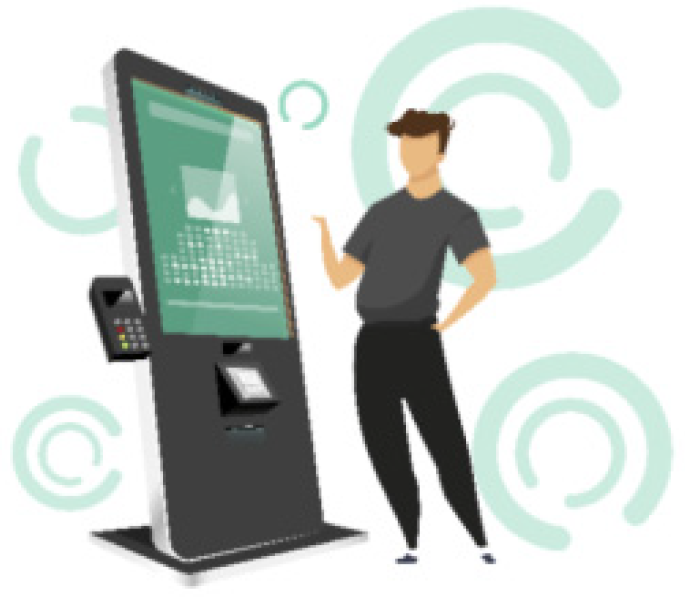
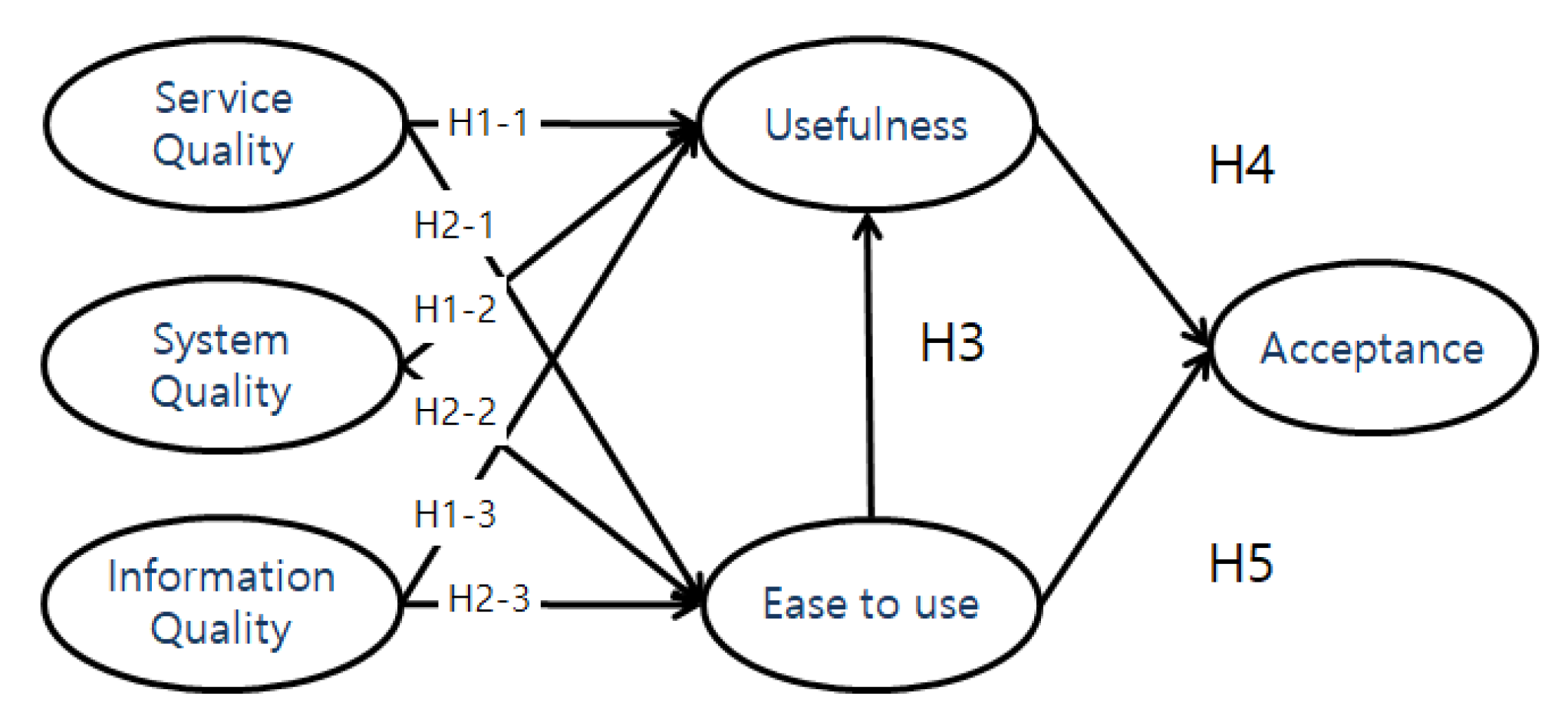
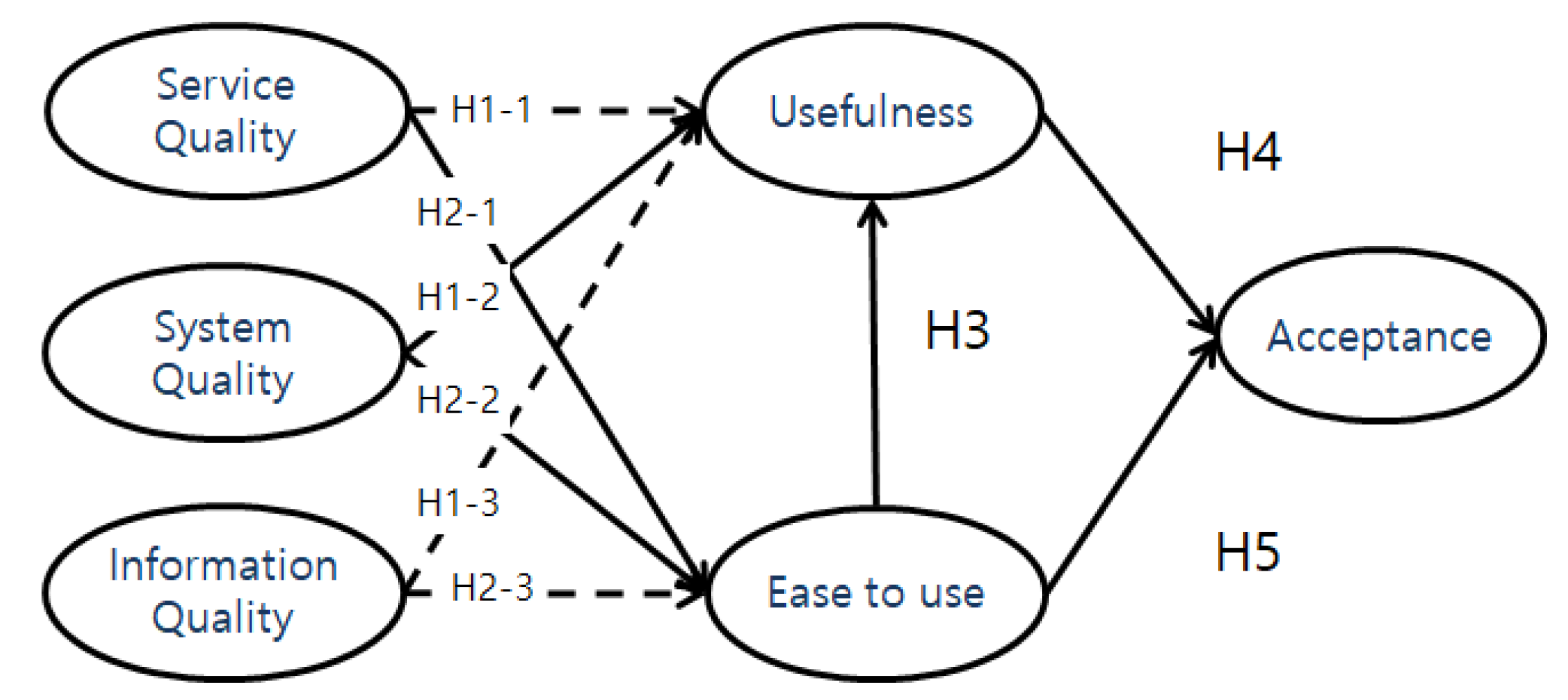
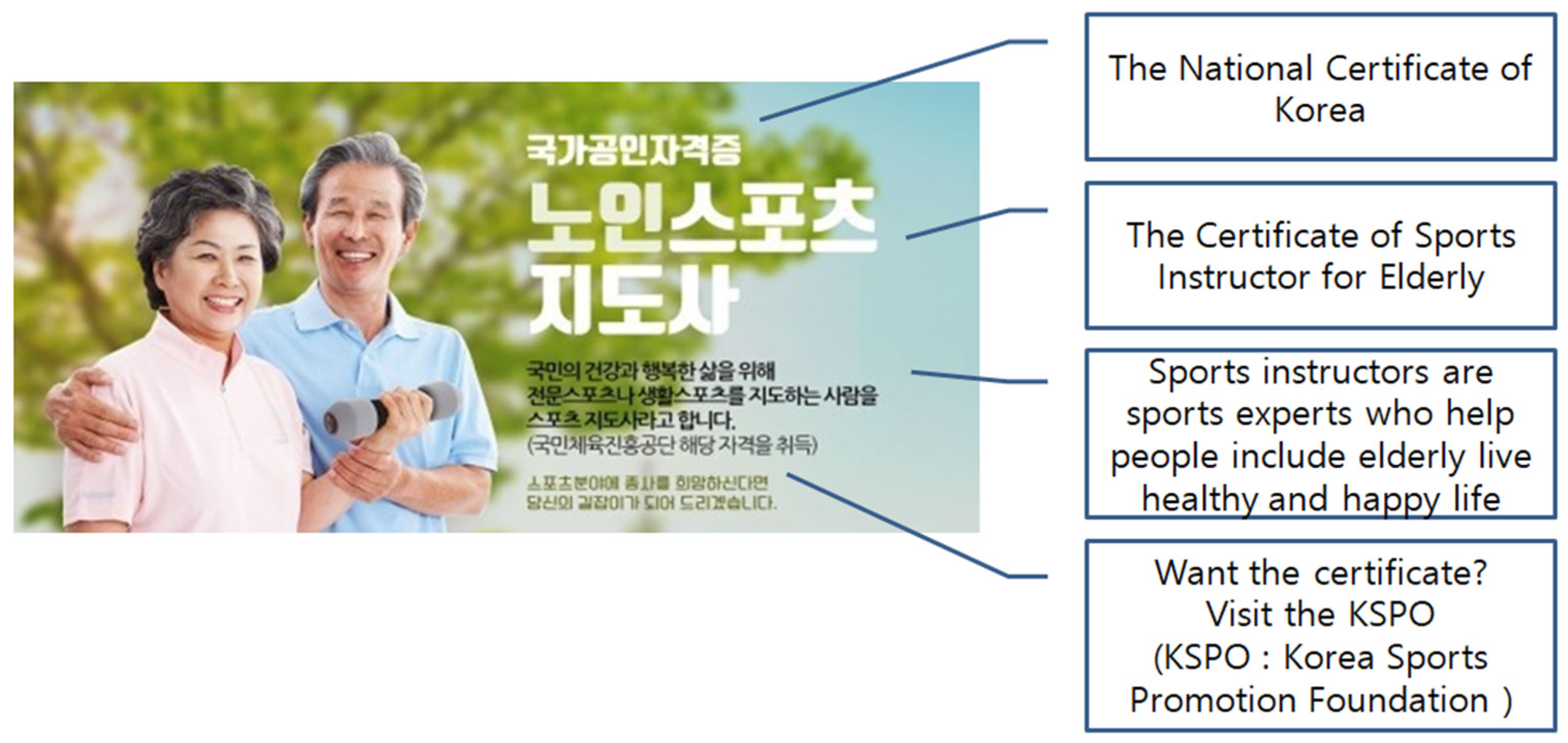
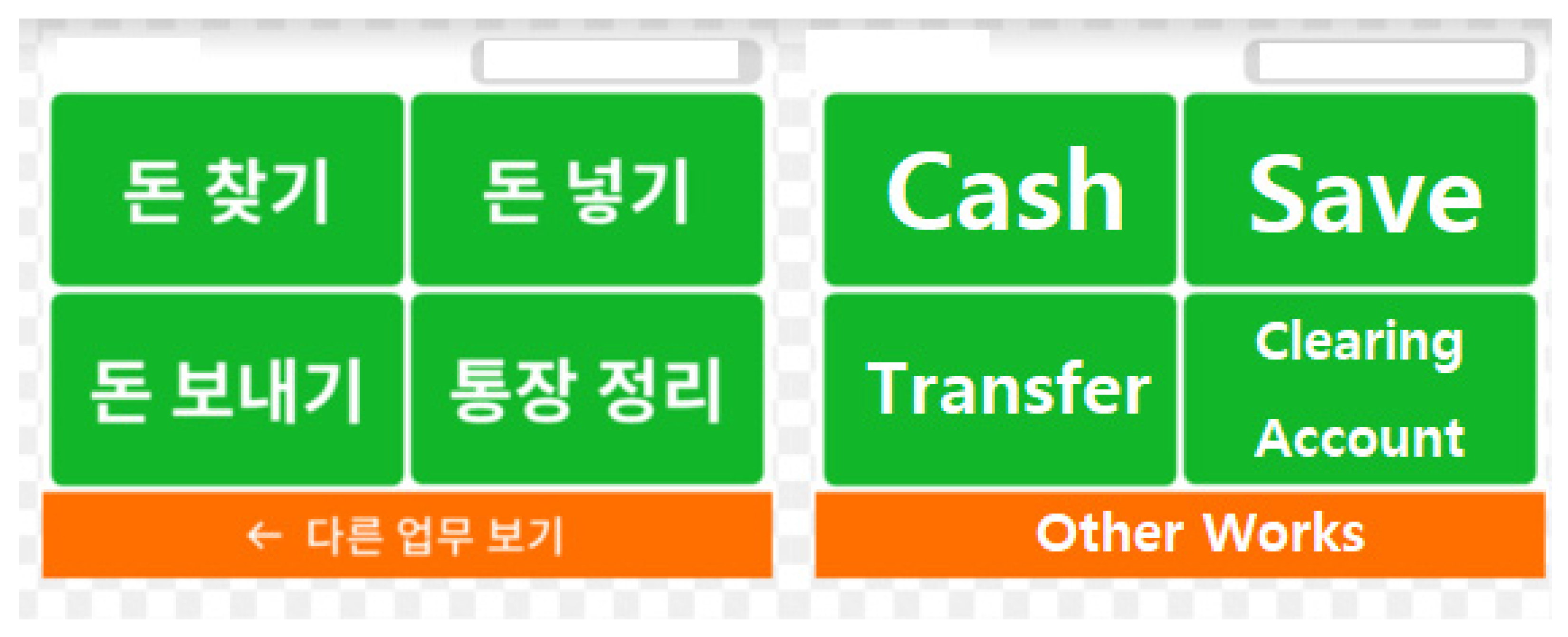
| Contents | Frequency | Percentages | |
|---|---|---|---|
| Gender | Male | 128 | 47.6 |
| Female | 141 | 52.4 | |
| Ages | 60~65 | 65 | 23.8 |
| 66~70 | 44 | 16.7 | |
| 70~75 | 68 | 21.6 | |
| 76~80 | 42 | 15.6 | |
| 81~85 | 30 | 11.2 | |
| 86~90 | 12 | 4.5 | |
| Higher than 90 | 18 | 6.7 | |
| Self Health Evaluation | Very Good | 57 | 21.2 |
| Good | 41 | 15.2 | |
| I don’t know well | 70 | 26.0 | |
| A Bit Bad | 43 | 16.0 | |
| Very Bad | 58 | 21.6 | |
| Education | Middle School | 86 | 32.0 |
| High School | 160 | 59.9 | |
| College | 12 | 4.5 | |
| Grad School | 11 | 4.1 | |
| Disability | Registered Disabled | 34 | 12.6 |
| Not Disabled | 219 | 81.4 | |
| Nonregistered Disabled | 16 | 6.0 | |
| Total | 269 | 100.0 | |
| Variables | Sub-variables | # of Questions | References |
|---|---|---|---|
| Quality Characteristics | Service Quality | 6 | [16] |
| System Quality | 4 | ||
| Information Quality | 5 | ||
| Ease to Use | 6 | [14] | |
| Usefulness | 6 | [14] | |
| Acceptance Intention | 6 | [16,17] | |
| Variables | Early Qs | Final Qs | χ2 | df | TLI | CFI | RMSEA | |
|---|---|---|---|---|---|---|---|---|
| Quality Characteristics | Service Q | 6 | 4 | 117.778 | 62 | 0.947 | 0.958 | 0.058 |
| System Q | 4 | 4 | ||||||
| Information Q | 5 | 5 | ||||||
| Ease to Use | 6 | 5 | 12.103 | 5 | 0.979 | 0.990 | 0.070 | |
| Usefulness | 6 | 5 | 12.655 | 5 | 0.973 | 0.985 | 0.076 | |
| Acceptance Intention | 6 | 6 | 17.591 | 9 | 0.980 | 0.988 | 0.060 | |
| Total | 33 | 29 | 478.411 | 362 | 0.963 | 0.967 | 0.035 | |
| Variables | Contents | Est | SE | CR | AVE | α |
|---|---|---|---|---|---|---|
| Service Quality | 1. The device runs fast. | 0.768 | 0.302 | 0.540 | 0.824 | 0.819 |
| 2. The connection speed is high. | 0.708 | 0.296 | ||||
| 3. The device has effective features. | 0.719 | 0.333 | ||||
| 6. It is easy to access information. | 0.742 | 0.380 | ||||
| System Quality | 7. It responds quickly. | 0.754 | 0.277 | 0.536 | 0.822 | 0.822 |
| 8. It provides information relevant to me. | 0.769 | 0.354 | ||||
| 9. I can expect my desired service. | 0.688 | 0.354 | ||||
| 10. I think it will continue to provide the same services as now. | 0.715 | 0.394 | ||||
| Information Quality | 11. Information is accurate. | 0.713 | 0.305 | 0.523 | 0.845 | 0.812 |
| 12. Information is clear. | 0.761 | 0.389 | ||||
| 13. Adequate information is provided. | 0.735 | 0.311 | ||||
| 14. Most up-to-date information is provided. | 0.747 | 0.428 | ||||
| 15. It is useful for obtaining information. | 0.654 | 0.410 | ||||
| Ease to Use | 16. I can learn things more easily. | 0.739 | 0.248 | 0.560 | 0.864 | 0.865 |
| 17. It allows me to control things I wish to do. | 0.725 | 0.230 | ||||
| 18. I can do what I wish to do with more flexibility. | 0.729 | 0.255 | ||||
| 19. It allows to me to achieve what I want to do with skills. | 0.764 | 0.292 | ||||
| 21. I can learn things I want to learn more easily. | 0.784 | 0.342 | ||||
| Usefulness | 22. I can do things I want to do more quickly. | 0.775 | 0.304 | 0.565 | 0.866 | 0.864 |
| 24. It makes good outcomes. | 0.773 | 0.359 | ||||
| 25. It is efficient. | 0.773 | 0.358 | ||||
| 26. It is effective. | 0.735 | 0.322 | ||||
| 27. It is useful for doing things I want to do. | 0.700 | 0.292 | ||||
| Acceptance Intention | 28. I will use it again in the future. | 0.737 | 0.320 | 0.551 | 0.860 | 0.881 |
| 29. I will recommend it to others. | 0.730 | 0.300 | ||||
| 30. I will use this as my go-to device for learning. | 0.736 | 0.275 | ||||
| 31. I will accept the information provided | 0.756 | 0.266 | ||||
| 32. I will search the provided information. | 0.751 | 0.303 | ||||
| 33. I will recommend the provided information to others. | 0.756 | 0.314 | ||||
| χ2= 478.411, df = 362, TLI = 0.963, CFI = 0.967, RMSEA = 0.035 | ||||||
| System | Service | Information | Usefulness | Ease | Acceptance | |
|---|---|---|---|---|---|---|
| System Quality | 1 | |||||
| Service Quality | 0.688 ** | 1 | ||||
| Information Quality | 0.133 * | 0.104 | 1 | |||
| Usefulness | 0.564 ** | 0.522 ** | 0.113 | 1 | ||
| Ease to Use | 0.585 ** | 0.524 ** | 0.082 | 0.539 ** | 1 | |
| Acceptance Intentions | 0.326 ** | 0.248 ** | 0.088 | 0.371 ** | 0.323 ** | 1 |
| Model # | χ2 | df | TLI | CFI | RMSEA |
|---|---|---|---|---|---|
| 1 | 479.153 | 365 | 0.964 | 0.968 | 0.034 |
| H | Path | Est | SE | T | Results | ||
|---|---|---|---|---|---|---|---|
| 1-1 | Service Quality | → | Usefulness | 0.146 | 0.108 | 1.351 | Rejected |
| 1-2 | System Quality | → | Usefulness | 0.357 | 0.127 | 2.814 ** | Accepted |
| 1-3 | Information Quality | → | Usefulness | 0.066 | 0.064 | 1.033 | Rejected |
| 2-1 | Service Quality | → | Ease to Use | 0.283 | 0.123 | 2.304 * | Accepted |
| 2-2 | System Quality | → | Ease to Use | 0.465 | 0.138 | 3.362 *** | Accepted |
| 2-3 | Information Quality | → | Ease to Use | −0.031 | 0.03 | −0.432 | Rejected |
| 3 | Ease to Use | → | Usefulness | 0.202 | 0.076 | 2.675 ** | Accepted |
| 4 | Usefulness | → | Acceptance Intention | 0.335 | 0.088 | 3.830 *** | Accepted |
| 5 | Easy to Use | → | Acceptance Intention | 0.153 | 0.076 | 2.014 * | Accepted |
Publisher’s Note: MDPI stays neutral with regard to jurisdictional claims in published maps and institutional affiliations. |
© 2022 by the authors. Licensee MDPI, Basel, Switzerland. This article is an open access article distributed under the terms and conditions of the Creative Commons Attribution (CC BY) license (https://creativecommons.org/licenses/by/4.0/).
Share and Cite
Kim, U.; Chung, T.; Park, E. Quality Characteristics and Acceptance Intention for Healthcare Kiosks: Perception of Elders from South Korea Based on the Extended Technology Acceptance Model. Int. J. Environ. Res. Public Health 2022, 19, 16485. https://doi.org/10.3390/ijerph192416485
Kim U, Chung T, Park E. Quality Characteristics and Acceptance Intention for Healthcare Kiosks: Perception of Elders from South Korea Based on the Extended Technology Acceptance Model. International Journal of Environmental Research and Public Health. 2022; 19(24):16485. https://doi.org/10.3390/ijerph192416485
Chicago/Turabian StyleKim, Uk, Taerin Chung, and Eunsik Park. 2022. "Quality Characteristics and Acceptance Intention for Healthcare Kiosks: Perception of Elders from South Korea Based on the Extended Technology Acceptance Model" International Journal of Environmental Research and Public Health 19, no. 24: 16485. https://doi.org/10.3390/ijerph192416485
APA StyleKim, U., Chung, T., & Park, E. (2022). Quality Characteristics and Acceptance Intention for Healthcare Kiosks: Perception of Elders from South Korea Based on the Extended Technology Acceptance Model. International Journal of Environmental Research and Public Health, 19(24), 16485. https://doi.org/10.3390/ijerph192416485






